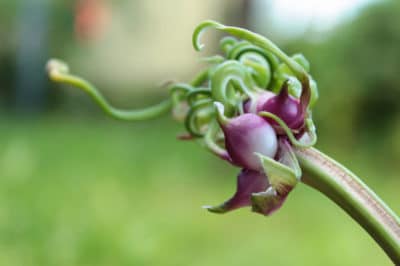Why to Grow Bulbils
One of the advantages of using garlic bulbils instead of cloves to produce more garlic is that you avoid the possibility of soil-borne diseases. Another is that a plant may produce as many as 100 bulbils, while most garlics produce 20 or fewer cloves. Planting bulbils from garlic plants that have lost vigor is a good way to rejuvenate the strain.
Disadvantages of Planting Bulbils
Bulbils will grow plants the first year. However, it does take several years for bulbils to produce plants with full-sized cloves, and the bulbils must be replanted each year. To plant bulbils, you must leave the scapes on those plants. The garlic from those plants is still edible but less desirable than plants from which you remove the scapes.
Garlic Varieties for Bulbils
Only hardneck garlic produces a flower stalk that will develop bulbils. Bulbils vary greatly in size and number depending on variety.
- Rocambole garlics typically produce 20 to 30 large bulbils.
- Porcelain garlic produces over 100 bulbils, but they are very tiny.
- Purple Stripe bulbils vary in size and quantity from plant to plant.
- Creoles, Turbans and Asiatics also produce bulbils.
Be Patient
It takes several years to produce plants with reasonable-sized bulbs when growing with bulbils. In most cases, you’ll get a few small cloves one season and then gradually larger and more numerous cloves each succeeding year. Varieties differ; rocamboles usually take two or three years to produce good cloves. Porcelains may take three or four years. Plant the largest cloves each year for best results.
Harvest and Planting
Cut the bulbils from the plant once the flower sheaths have burst. Hang the stalks to dry fully and store in brown paper bags. In the fall, plant bulbils in fertile, well-drained soil. Small bulbils should be just barely covered, while larger bulbils can be planted an inch deep. Mulch well and keep well-watered; bulbils don’t tolerate water stress. Harvest before the tops have died down.
Growing On
Each year, select the best plants and cloves to propagate. Look for healthy plants with plenty of top growth and strong root systems. Cloves should be plump and firm. You can replant all the cloves or eat the smallest ones and plant only larger cloves. If you mulch, control mice and voles, which will eat the bulbils. Store in a warm dry place until planting time the next fall.
